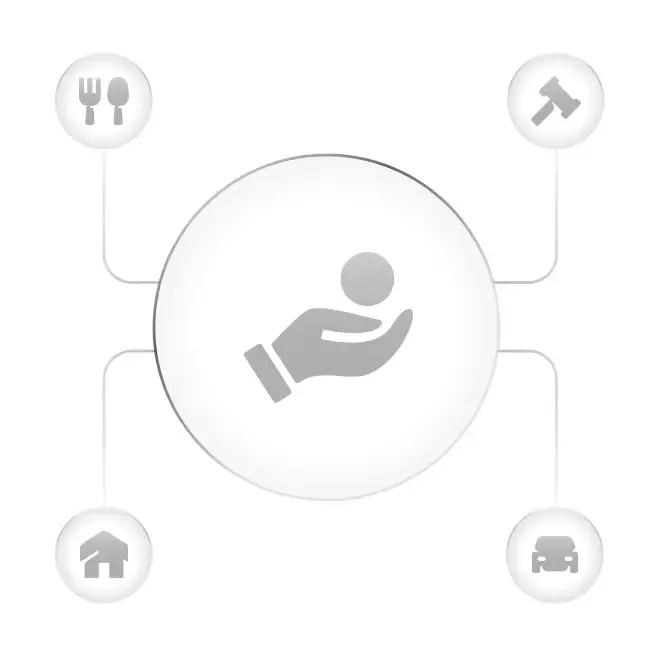Employee Allowances & Deductions Policy
Employers should support employees' extra efforts and financial needs. Therefore, an allowances policy is established to define the types of allowances and the process for prior approval. It encompasses the following areas: housing, transportation, mobile, nature of work, food, cash responsibility, education, and special allowances as needed.

Created by
Ahmed Abdel Wahab
|
Human Resources Adviser
Share the calculator with an HR college
What’s included in the employee allowances policy?
The Employee Allowances Policy clarifies the calculation of allowances, ensuring compliance with labor law. This includes sub-policies for transportation allowance policy, air ticket allowance policy, mobile allowance policy, cost of living allowance policy, hazard allowance policy.. etc.
The policy defines eligibility for allowances and their amounts, whether as a percentage of the monthly basic salary or a defined minimum or maximum. It also covers family allowances, such as education allowance for children's expenses.
The Employee Allowances Policy is crucial for any business as it informs both employers and employees about their rights and responsibilities regarding allowances. Employees understand what allowances they are entitled to and why, while employers clearly declare the types of allowances provided and their governing rules.
Employee Allowances Policy - Table of contents
1. An overview
2. Housing Allowance
3. Transportation Allowance
4. Mobile Allowance
5. Nature of Work Allowance
6. Food Allowance
7. Cash Responsibility Allowance
8. Education Allowance
9. Other Allowances
10. Legal Compliance
Why do you need an allowances policy?
Helping employees improve their work-life balance.
Ensuring that the amounts claimed are within the permitted limits.
Clarifying the importance of checks for approval.
Reducing administrative responsibilities, delegating it to employees.
How do you use the model?
Download the template and review the content.
Customize it with name, logo and specific types of allowances.
Include it in the employee handbook and add it to Jisr HRMS.
Ensure compliance by getting the allowances policy reviewed by a legal/HR expert.
See Jisr in action
Scale HR operations, manage talent, control spend – all in one platform with Jisr. Get started in weeks, not months.

FAQs
Transport allowance is a salary component provided to employees in Saudi Arabia to cover
their transportation expenses of commuting to and from the workplace including public transit, personal vehicles, or taxis.
The transportation allowance policy template above defines the amount as 10% of the monthly basic salary unless transportation is provided by the company or employees are residing in company-provided accommodation, you can customize it based on the following factors:
Distance between the employee’s home and the office.
Transportation expenses.
Overall salary package.
Air ticket allowance is an annual benefit provided by employers that offers employees financial support for travel expenses. It is given to cover the cost of air tickets for annual leave, helping employees to visit their home country.
The air ticket allowance policy defines eligible people for the ticket, i.e. employee only or if the family is included as well, and number of tickets per cycle. The amount can vary by the seniority of the employee or by country from where he hails.
The mobile allowance is an amount paid to employees to cover the cost of using a mobile phone for work-related purposes.
The mobile allowance policy template above clarifies employees eligible for a monthly allowance, it sets a maximum limit of SAR 1500 annually, but you can determine an appropriate allowance amount based on job level, data and network costs, or even the cost of the device.
Cost of living allowance is the amount of money required to cover basic expenses like housing, food, taxes, and healthcare in a specific location and time period. It is common in
dynamic environments where living expenses can fluctuate due to inflation. It helps employees to maintain their purchasing power despite rising prices for goods and services.
The cost of living allowances policy outlines eligibility criteria and the standards used for its calculation.
The hazard allowance policy specifies which employees are eligible to receive hazard allowance, typically including those working in the following conditions:
Healthcare facilities.
Hostile environments.
Extreme climate conditions.
Mines or other industrial settings.
War zones.
Additionally, the following industries or job roles commonly offer hazard allowances:
Logging.
Commercial fishing.
Landscaping.
Aviation.
Agriculture.
Construction.